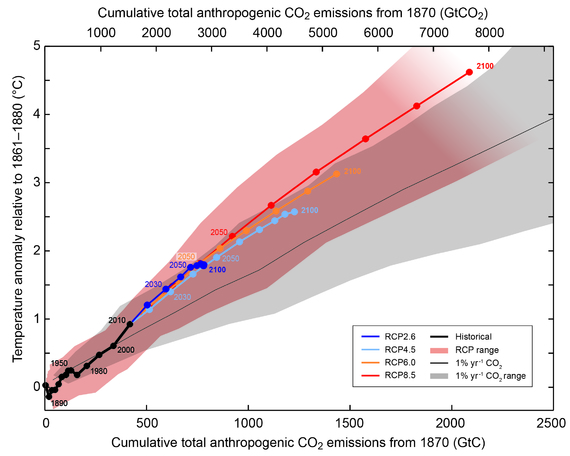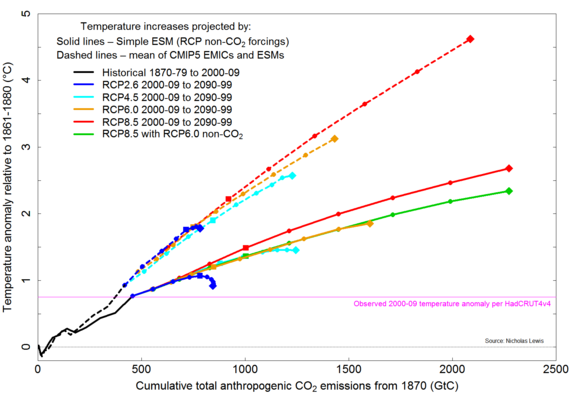One of the more iconic figures from the IPCC's Fifth Assessment Report was SPM10, which purports to show the relationship between cumulative carbon dioxide emissions and temperature.
These projections are produced by Earth System Models (ESMs), with input from the various carbon dioxide concentration forecasts (RCPs). On this basis the IPCC says that their best estimate of climate sensitivity to cumulative emissions is 2.4°C per gigatonne of carbon dioxide. However, as always seems to be the case with IPCC pronouncements, as soon as you start considering observations, these statements start to appear rather problematic.
In a post at Judy Curry's Nic Lewis notes that a recent paper that used climate model projections scaled to match observations to estimate the same value came up with a rather lower estimate of 0.7–2.0°C per GT. But even more intriguingly, he says that even this figure may be an overestimate. The carbon cycle is an area of huge uncertainty - readers no doubt recall the recent discoveries about the size of the climate effect of phytoplankton. Lewis explains that recent estimates of the amount of carbon dioxide sequestered on land have been substantially higher than earlier ones. And the question of how these carbon sinks will change in a warmer planet is even murkier. What certainly seems true is that the IPCC's existing ESMs don't consistently reproduce past changes in carbon dioxide concentrations, most overestimating it considerably. Their estimates of how much carbon is sequestered in various sinks also vary wildly. This makes their projections of future carbon dioxide concentrations at least highly debatable - some might even say "worthless".
With these uncertainties in mind, Nic has created his own simple ESM, with its key parameters constrained by observations. This means it has a climate sensitivity to carbon dioxide of 1.7°C per doubling and a TCR of 1.35. With these figures and with the carbon sinks constrained to recent observations too, he produces this figure, with the original IPCC results at the top, and with his own estimates below.
If he's right, then we should expect warming of only around 1°C per GT of carbon dioxide, not 2.4.
Observations are the darnedest things, aren't they?

